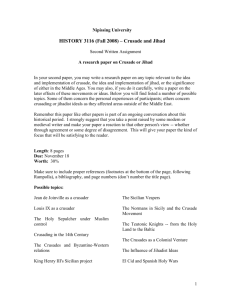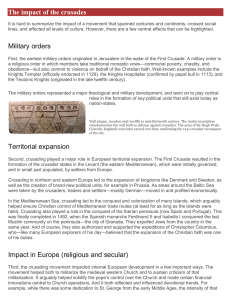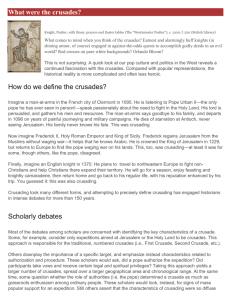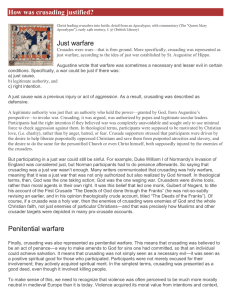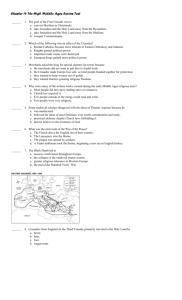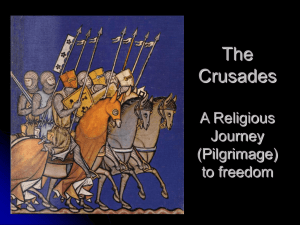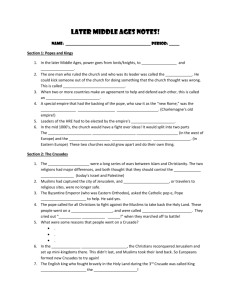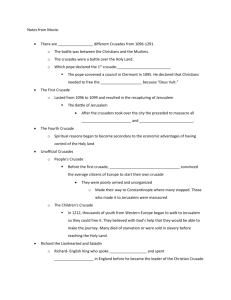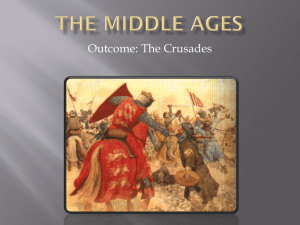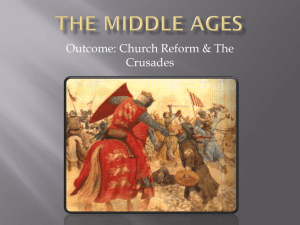The when, where, and who of crusades
advertisement
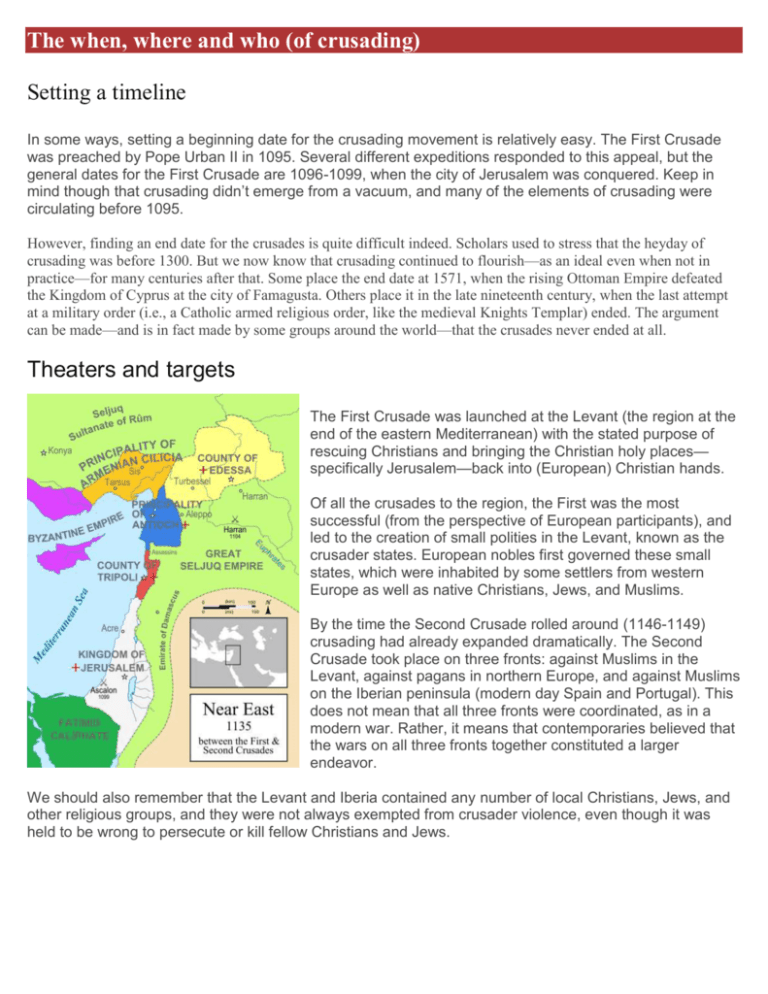
The when, where and who (of crusading) Setting a timeline In some ways, setting a beginning date for the crusading movement is relatively easy. The First Crusade was preached by Pope Urban II in 1095. Several different expeditions responded to this appeal, but the general dates for the First Crusade are 1096-1099, when the city of Jerusalem was conquered. Keep in mind though that crusading didn’t emerge from a vacuum, and many of the elements of crusading were circulating before 1095. However, finding an end date for the crusades is quite difficult indeed. Scholars used to stress that the heyday of crusading was before 1300. But we now know that crusading continued to flourish—as an ideal even when not in practice—for many centuries after that. Some place the end date at 1571, when the rising Ottoman Empire defeated the Kingdom of Cyprus at the city of Famagusta. Others place it in the late nineteenth century, when the last attempt at a military order (i.e., a Catholic armed religious order, like the medieval Knights Templar) ended. The argument can be made—and is in fact made by some groups around the world—that the crusades never ended at all. Theaters and targets The First Crusade was launched at the Levant (the region at the end of the eastern Mediterranean) with the stated purpose of rescuing Christians and bringing the Christian holy places— specifically Jerusalem—back into (European) Christian hands. Of all the crusades to the region, the First was the most successful (from the perspective of European participants), and led to the creation of small polities in the Levant, known as the crusader states. European nobles first governed these small states, which were inhabited by some settlers from western Europe as well as native Christians, Jews, and Muslims. By the time the Second Crusade rolled around (1146-1149) crusading had already expanded dramatically. The Second Crusade took place on three fronts: against Muslims in the Levant, against pagans in northern Europe, and against Muslims on the Iberian peninsula (modern day Spain and Portugal). This does not mean that all three fronts were coordinated, as in a modern war. Rather, it means that contemporaries believed that the wars on all three fronts together constituted a larger endeavor. We should also remember that the Levant and Iberia contained any number of local Christians, Jews, and other religious groups, and they were not always exempted from crusader violence, even though it was held to be wrong to persecute or kill fellow Christians and Jews. After the Second Crusade, crusading continued to expand and evolve. Muslims (or areas under Muslim governance) continued to be targets, especially when they threatened or reconquered portions of the crusader states, but other targets included Christian “heretics” (for example, in southern France), the Christian Byzantine Empire, and political opponents of the papacy within Europe. Crusading also developed local traditions. In northern Europe, crusading became a festive seasonal rite of passage for western European knights, complete with honorary feasts and prizes. In other places, crusading interacted with preexisting factors, for example in Iberia, where both ideas of crusading and of the “Reconquest” were influential. In still other places, again in northern Europe but also Malta, the military orders—armed religious orders (most famously the Knights Templar)—set up independent, or virtually independent states dedicated to perpetual crusading. Participants A departing or returning crusader being embraced by his wife, from the Belval Priory, Lorraine, late 12th century (Musée des Beaux-Arts, Nancy) Who went on crusade? From the beginning, popes and other leaders sought to encourage only professional men of war, whether kings, lords, knights, or simple menat-arms, to go on crusade. And from the beginning, individuals of almost every other social class, age, and gender ignored this and wanted to go, too. The only people explicitly forbidden from going on crusade were those who had taken religious vows (like priests and monks), and even then, many tried to find a way to go—and, indeed, many went. This doesn’t mean that everyone in Europe was pulled inexorably into crusading like water down a drain. Crusading was expensive, and it was very risky. To go on crusade meant leaving your loved ones and your property (if you had any) vulnerable for at least several years and possibly forever. Going on crusade was not an “easy out” for younger sons (as used to be thought) nor was it a reliable treasure-hunting expedition; it impoverished many more people than it profited. Nonetheless, because of the spiritual and social rewards on offer for crusading, crusade leaders were never able to fully stop people of both genders and all classes from accompanying armed parties on crusade, and it is fair to say that many expeditions, especially those to the Levant, included a wide range of age, social classes, and military experience. Essay by Dr. Susanna Throop
